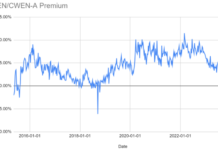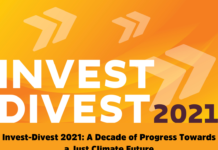The following interview with RE Royalties (RE.V, RROYF) CEO Bernard Tan was conducted in September by AltEnergyStocks.com Editor Tom Konrad. Links and ticker symbols were not included in his original responses, but added by AltEnergyStocks.com as a resource for readers.
Q: What exactly is a renewable energy royalty?
A renewable energy royalty is a stream of cash flows generated by a renewable energy project. When the project generates electricity and sells its electricity, we receive a percentage of the revenues from the electricity sales, otherwise known as a gross revenue royalty. We receive that gross revenue royalty, on average, for about 15 to 20 years, on the electricity produced by the renewable energy project.
Q: Are there any other renewable energy financiers who use the royalty model?
There are only a small handful of renewable energy financiers that use the royalty model. Altius Minerals (ALS.TO, ATUSF), a mining royalty company, has a small portfolio focused on wind projects.
Q: What other industries use royalties as part of their financing? How do those royalties compare to renewable energy royalties?
Oddly enough, almost every industry has a form of royalty financing. There are some very large royalty companies in the mining sector like Franco Nevada (FNV) or Wheaton Precious Metals (WPM), or in the oil and gas sector like Prairie Sky (PSK.TO). Royalty Pharma (RPRX) and DRI Capital are very large pharmaceutical royalty companies. Even consumer services and products have royalty companies like Alaris Royalties(AD-T.TO), A&W Royalties (AW-UN.TO) and Diversified Royalties (DIV.TO).
The difference between some of the other royalties compared to renewable energy royalties is that these royalties tend to have pricing and production volatility compared to a renewable energy royalty. For instance, the price of a metal could fluctuate depending on the spot prices, an oil and gas well could be depleted due to water encroachment or a restaurant could be shut down due to the current pandemic. This would affect the price or production of the product which is being sold, and would affect the royalties being paid. For a renewable energy royalty, while there is also production variability due to changing wind patterns or less sun on any given day, that variability tends to be much smaller over the course of a year. In addition, most of the electricity being sold is usually sold at fixed contract prices, so that also avoids the pricing volatility. As one of our investors told us, as long as the sun shines, the wind blows and the water flows, those royalties will continue to be paid!
Q: Why start a company to invest in renewable energy royalties?
We recognized the opportunity to apply a well-proven royalty business model to the renewables sector, where royalty financing did not exist. We saw similar parallels to the exponential growth of royalty financing in the mining and oil and gas sectors in the mid-2000s, which established the mining royalty giants of today like Franco-Nevada and Wheaton Precious Metals.
Royalty companies present a unique investment value proposition because they embody certain characteristics which we believe investors find appealing. For instance:
- Compared to a renewable energy producer, developer or supplier, we can maintain very low overheads;
- We don’t need significant construction or sustaining capital to get an asset operational in order to generate cash flow;
- We can achieve cash flow diversification much quicker;
- Our economic interest is top-line generated as it is based on a percentage of revenues, as opposed to bottom-line; and
- We are a first mover in a large and fast growing renewable energy industry and that puts RE Royalties in a unique and enviable position to take advantage of the systemic changes in the energy industry in the coming decades.
Q: How long do the royalties you invest in last/ What is the duration of the contracts?
We typically acquire royalties that range between 15 to 20 years. This usually matches the power purchase agreements (PPAs) that underlying projects have signed to sell the renewable energy generated.
Q: How many of the wind and solar farms you have helped finance have PPAs, and what is the average term?
Currently, 82 of the 84 solar and wind projects we have financed have PPAs in place. Those projects have a generating capacity of 243MW and on a portfolio basis, an average term remaining of about 17 years.
Q: What types of renewable energy have you helped finance? What percentage of your investments are in each type?
Most of our investments have been made on wind and solar, with a portion on hydro. Our portfolio allocation is currently about 35% wind, 63% solar, and 2% hydro.
Q: In terms of IRR, where do royalties stand in terms of cost of capital compared to other types of financing for wind and solar such as tax equity and debt?
The IRRs that we target are typically in the 12-15% range. Cost of capital for debt can range 4-7% depending on the project, location, operator and electricity buyer. Cost of equity can be significantly higher and more likely in the high teens; commensurate for the risk taken.
Q: What conditions make a renewable energy developer or owner a particularly good fit for a renewable energy royalty?
Our ideal client is a renewable energy operator who has existing projects that they don’t want to sell in order to fund their growth. One of the additional benefits of royalty financing is the flexibility of the structure. To provide some examples,
- One client sold us a royalty and utilized the proceeds to invest in their next development project allowing them to retain a much larger equity stake thru construction, and avoid dilution by the majority partner. This allowed our client to establish a higher percentage ownership and rights to the cash flow of the project. The project is now operating.
- Another client utilized royalty financing to acquire an additional operating wind farm to add to their portfolio. They effectively utilized the future cash flow streams of the project to help fund the acquisition.
- Another client sold us a royalty on a portfolio of solar projects in order to fund the growth and development of their distributed solar business in Africa.
- A community based client entered into a royalty financing with us in order to pay down some expensive short term debt.
As you can see, there are a variety of reasons our clients enter into a royalty financing transaction with us and the key benefits include the flexibility and the non-dilutive nature of the financing.
Q: Do you have any competitors in the RE royalty space? What barriers exist to keep someone from setting up a direct competitor tomorrow?
While we don’t have any direct competition to what we currently do, we do have indirect competition in the form of mezzanine debt. The key difference is that royalty financing tends to be much more flexible and can be tailored depending on each client’s needs. Most mezzanine debt also has a number of one time hidden costs such as commitment fees and drawdown fees that degrade the overall economics.
While there are no barriers to entry in setting up a direct competitor, there are some unique ingredients that have to be in place. For instance, you would need an executive team that has experience in both royalty financing and also in the renewable energy sector to be able to transact with potential clients. Further, even though electricity is fundamentally a commodity, electricity markets are very regional and each jurisdiction has its own set of rules.
We do see the growth of royalty financing in the renewable energy sector and would welcome more direct competition. If you look at the mining industry as a comparable, companies like Franco Nevada and Wheaton Precious started off small, similar to where we are, in the early to mid 2000s. Once the mining industry saw the tremendous benefit royalty financing provided, these royalty companies eventually grew to the multi-billion dollar behemoths that they are today.
Q: What is currently the biggest constraint on your growth: finding new opportunities to invest, or your ability to quickly raise additional capital?
Currently, we have far more opportunities to invest in than the capital on our balance sheet. Without spending any money on business development, we see 2 to 3 new opportunities approach us each week. While not all of these deals are suitable given our investment screening, there are many which we have had to turn down mainly because they would have skewed our portfolio too much given our current portfolio size.
While capital is available, we have to ensure that the capital is also the right type of capital. As such, we are constantly monitoring new capital opportunities to ensure we can continue to grow and to also be fair and accretive to our shareholders.
Q: How quickly do you expect to grow RE Royalties’ investments over the next few years?
One of the unique aspects of the royalty financing structures utilized is that it allows for a fairly quick payback of our original investment capital. To give you an example, without raising any money, we will have approximately $11 million in capital returning to treasury due to maturity of the loan portion in our investments. The royalties will continue to pay for another 18 years, despite getting our original investment back. This structure and “returning capital” allows us to grow our investments organically by re-investing into new deals, without having to dilute our shareholders.
I believe that in the next few years, we would be able to double or triple our existing portfolio of investments.
Q: How much of this growth do you expect to come from recycled capital, and how much from new debt or equity?
We expect this growth to be funded 50% by recycled capital and 50% by our green bond raise.
Q: Do you have a target leverage ratio for your company? Where do you currently stand compared to this target? Do you have any covenants that would limit your ability to increase debt financing in the future?
Our board and management team takes a fairly conservative view of leverage. We would prefer not to over-leverage and believe a 50/50 debt equity ratio is a reasonable leverage level. We have actually built this as a covenant into our recent green bond offering to ensure we remain strongly capitalized for both our shareholders and debtholders.
If you compare us to a renewable energy operator, their debt equity ratios tend to be much higher. These companies, on average, have a 60/40 to 80/20 debt equity mix. If you compare us to a financial institution, the leverage by a financial institution is even much higher, approaching a 90/10 debt equity mix.
Q: You recently launched a green bond. Why did you choose to offer these bonds to the public rather than using more traditional bank financing?
For two primary reasons. Traditional bank financing is generally quite restrictive and/or expensive for smaller organizations like us. Further, even though we have had revenues since day 1 and positive cash flow from operations and earnings, many traditional banks struggle in understanding our business model given that as a first mover, we are “outside the box” or a “box does not exist (yet)”.
The second reason is that we have had a lot of prospective investors that wanted a fixed income product that offers a reasonable yield, and did not necessarily want the equity exposure. If you look at 5-year bonds, many corporate bonds are in the 2-4% range, and if you are buying a bank GIC, the yield is even lower at 1-2%. Our green bonds will pay a coupon of 6%, and we have structured it as senior secured, which offers a high degree of protection to the bond investor. For our shareholders, this is very accretive and beneficial because of the high IRRs that we are able to achieve in our investments.
https://www.reroyalties.com/green-bonds
Q: Do you have a target payout ratio?
For our shareholders, the current dividend yield is about 3%, based on a $1.40 share price. We haven’t set a target payout ratio and monitor with our Board on a quarterly basis to set our payout.
Q: What is your current payout ratio?
Our current payout ratio is approximately 1. We have been growing our revenues by about 70% year-over-year and expect this ratio to decrease over time.
Q: What else should I be asking?
Prospective investors always ask what keeps me up at night.
One of the advantages (which can also be seen as a disadvantage) is our relatively small team size. While the advantage is that we can keep cost low, the flip side risk is that there is a concentration of human capital.
While we always joked internally about not taking the same elevator or the same plane, one of the side effects of the pandemic is that we have all been working from home and not been on a plane for quite some time!
The other nice thing about the royalty business model is that once a transaction is consummated with our clients, it goes on cruise control and the royalties will continue to pay for 15 to 20 years. So even if something does happen to our management team, shareholders and debt holders can take comfort that the royalties will continue to be paid as long as the sun shines and the wind blows.
About RE Royalties
RE Royalties Ltd. is a specialty finance company created in 2016 that creates stable long-term cash flow streams by utilizing a royalty financing model to provide loans to, and acquires revenue-based royalties from, renewable and clean energy projects and companies globally. The company’s mission is to provide innovative financing for climate change solutions. RE Royalties is a publicly traded company on the TSX Venture Exchange under the symbol “RE”, and the first to pioneer the royalty-financing model for renewable energy projects.
Bernard Tan, Chief Executive Officer and Co-founder, RE Royalties
Bernard Tan is Founder and CEO of RE Royalties Ltd., a royalty financing company focused on providing alternative capital solutions to small to mid-size renewable energy companies. RE Royalties is building a new innovative platform to “Uber-ize” the ability for investors to invest in renewable energy projects.
The royalty platform provides a non-dilutive financing solution for companies to develop their renewable energy portfolios while providing investors with an impact investment that offers a growing long-term yield and strong capital protection. RE Royalties’ is changing how renewable energy projects are financed and accelerating the growth of the clean energy economy.
Bernard started his career with KPMG in the technology practice and for 10 years prior to RE Royalties, was the CFO of Hunter Dickinson Inc., a globally recognized resource private equity group based in Vancouver.
Bernard is a CPA, CA and has a BComm from UBC and an MBA from McGill. He is also a volunteer with Futurpreneur Canada, and has advised CPA Canada and the BC Securities Commission on various policy matters.
Learn more on RERoyalties.com
Social Media Links
https://www.facebook.com/RERoyalties
https://twitter.com/RERoyalties
https://www.linkedin.com/company/re-royalties-ltd
https://www.instagram.com/reroyalties
DISCLOSURE: AltEnergyStocks.com and interviewer Tom Konrad were paid to conduct and publish this interview. Neither AltEnergyStocks.com or Tom Konrad held positions in RE Royalties stock or its bonds at the time this article was published, but they may acquire such positions at a future date without notice.








